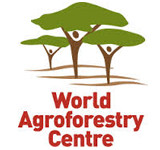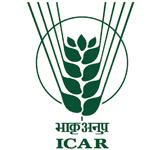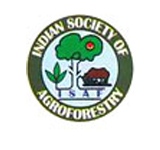
Vigyan Bhavan & Kempinski Ambience
10 - 14 February 2014
Delhi, India
blog

Land productivity per unit area is one of the major issues for researchers and policymakers. In the context of climate change, weather aberration, land degradation, scarcity of agricultural land, increasing demand for food, fuel and fodder, agroforestry is one of the major options for its recognized potential for enhancing unit land productivity. Trees being integral component of agroforestry systems, tree canopy imposes limitation for light interception to the understory crops. Due to low incident light under the canopy, the resultant shade creates a major constraint for optimal crop productivity in comparison to the sole crop being grown without any trees. Intensity of shade varies from partial to deep depending upon the tree canopy, its growing pattern and the microclimate. However, the important question is that what would be the critical limit of such shade?
Without trees, no agroforestry is meaningful and at the same time, shade over the understory crops, due to existing canopy of tree is inevitable. More clearly, challenges of shade i.e. low available incident sunlight for the crops and the practice of agroforestry go hand-in-hand. Thus it is essential to select crops which can tolerate shade without compromising its potential yield or we should have resilient crops having minimum loss of yield due to shade.
With this background, for making agroforestry more popular, most effective and sustainable to the stakeholders mainly keeping the focus of our valued farmers, efforts are being made for the past several years at our Centre (National Research Centre for Agroforestry, Jhansi, India) towards understanding the shade-induced (low light) constraints and deciphering the shade tolerance of crops for agroforestry importance. To accomplish the challenging objectives, experiments are being conducted for the past several years taking various important food grain crops like wheat, mustard, green gram, soybean, black gram, sesame, peas etc. by growing these crops in field under three simulated shade-net houses or without shade in open field. The simulated shade-net houses (25 x 8 x 3 m) were so designed that it provides 33% shade (about 67% light), 50% shade (about 50% light) and 75 % shade (about 25% light) (See the photograph for an example).
Throughout the experiments, a holistic approach (from cell to environment) focusing on various aspects of physiology including crop phenology, biochemical and some molecular level traits have been investigated. To our knowledge, for the first time, our experiments revealed that 33% shade would be a critical limit, at least, for the semi-arid conditions of Central India as the important physiological adaptive traits are being highly down-regulated from 50% shade and more onwards depending on the select crops. Role of several physiological and biochemical traits mainly pigments (like chlorophyll a/b), antioxidant like anthocyanin, light managing biomolecule like epicuticular wax, functioning of chloroplast(estimated thylakoid electron transport rate), photosystem 2 activity (mainly photochemical efficiency, dark adaptive Fv/Fm; effective PS2 quantum yield), assessment of photosynthetic Carbon gain (through net CO2 assimilation rate), transpiration and photosynthetic water use efficiency, light energy management and leaf protein profiles etc. have been deciphered towards understanding the causes of physiological limitation due to low light (shade).
Efforts are made as new initiatives to delineate comprehensive set of most responsive and candidate traits at much greater details through physiological, biochemical and molecular level and for which the project requires apt funding as well. As light management is the prime factor for the crops under agroforestry system to maximise their yield under varying shade, towards this direction, several indices on the leaf optical properties of the crops of agroforestry importance are being studied using spectro-radiometry techniques. For this several indices like rate of leaf Transmittance (T), Reflectance (R), NDVI (Normalized Difference Vegetation Index), PRI (Photochemical Reflectance Index) etc. are being standardized in combination with simultaneous measurement of gas exchange and chlorophyll fluorescence techniques for various environmental and microclimatic conditions for agroforestry systems.
Thus our novel efforts are on and it requires priority for alleviating the constraints due to tree canopy shade (light limiting) on the crops for agroforestry importance towards making agroforestry more effective and sustainable for the days ahead.
Photo: Crop phenology under 33% shade (67% Sunlight
Blogpost and photo by Dr. Badre Alam, Senior Scientist (Plant Physiology)
National Research Centre for Agroforestry (Jhansi, India) – badrealam@gmail.com
|
This post is entry nr #35 in our #WCA2014 blog competition. The five blogposts with the most and highest votes will receive a signed copy of the book "Trees for Life". The most popular blogpost will get an iPad.
This blogpost received 153 votes, with an average score of 4.5 (out of a max of 5).
Follow our #WCA2014 social reporting teamfollow our social reporting team via the #WCA2014 tag on Twitter, our blog and our Facebook page.
|






94 People have left comments on this post
really very good research from the farmer view point. this will show the path to other agroforestry researchers to decide the number of trees per acre.
This is wonderful. You are helping the plants to come up under shade.
Effect of shade in agroforestry imparts high impacts on agriculture crops , in such a situation selecting right crop for right place under the right tree species is important aspect of agroforestry systems. I am congratulating Dr. Badre Alam for his contribution towards research in shade management in agroforestry.
This outcome will help to select suitable crop combinations for optimum system productivity.
The findings will help in utilising the unused space within the orchard/forest for taking other crops especially the fodder crops which are of short duration and there taking fruit is not the target. The products of the crops that use the interspace in orchard will be significantly competitive in the markets due to lesser fixed cost involved.
Vikas Kumar-
Scientist-Agricultural Economics
Shade tolerance is really very important trait for crops growing under tree canopy. The finding will certainly help researchers in designing crop variety/systems suitable for AF system.
Hope the information generated will lead to new understanding of shade tolerance in agroforestry. Best wishes Dr. Badre Alam.
Physiobiochemical point of view this type of research is really needed to improve crop productivity under agroforestry system…………………………shade is a challenge under agroforestry, and only through this type of study we can overcome……….thanks to Dr. Alam for his valuable contribution and suggestions to improve crop production…
really nice…..may I know, how many peoples in India are doing this type of research………congrats to Dr. Alam…….
this type of study can help farmers to select tree as well as crop under agroforestry……………nice study.
Very informative and good research for farm women.
Dr. Badre Alam has screened many crop species under shade to find out potential shade tolerant crops. This type of research is more important to increase productivity under shade conditions also. Excellent concept and motive.
The holistic approach is appreciable in the context of changing climate and environment.
From this study we can understand the physiological limitations of light for the maximum potential yield of grain crops under shade conditions. I congratulate Dr. Badre Alam for this great concept.
Dr. K. Annamalainathan
Rubber Research Institute of India
Kottayam, Kerala
really nice
This is very important study from agroforestry point of view to ascertain tolerance limit of shade for understory crops.
Rare article where the significance of light is attached with the agroforestry. Important for the eastern /nort-eastern part of the country where the cloud cover always create a problem. Nice to see that the author wants to attach the importance of physiological traits and tries to correlate with the low light condition. This is the area where even the ICAR has gave the importance by creating the challenge programme on low light stress. This is very specific problem for our country and we are supposed to solve this by making a kind of Research Consortium.
Keep the good work going author……
Cheers..
It is very useful and need of the hour for improving agroforestry system productivity. Highly appreciable work.
Low light stress tolerance studies is really important to improve crop production under agroforestry systems. It is an excellent work.
high light is often deleterious to many crops. Photophysiological studies by Dr. Alam will definitely improve the efforts on enhancing productivity of crops growing under shade. All wishes for the efforts towards this direction.
It will help farmers to select suitable shade tolerant crops for agroforestry systems. Nice work and best wishes.
Good work done.
This is what I was searching for. The piece of information is very much necessary for developing an agroforestry model. Shade tolerance level for different agricultural crops should be standardized. I appreciate the piece of work.
This will support the agroforestry policy makers and may be included in the forthcoming agroforestry policy, so that farmers will get the benefit of original research findings. Well done Dr. Badre Alam.
This will support the agroforestry policy makers and may be included in the forthcoming agroforestry policy, so that farmers will get the benefit of original research findings. Well done Dr. Badre Alam. Excellent Congratulations!!
Really nice to see your good work and thinking.I think under-story growth of so many species(we have identified more than 66 sps. in rubber plantations)is equally important to maintain biodiversity and other beneficial effects of shade loving plants
Really excellent work, this type of work can improve agroforestry under climate change scenario.
Really excellent work.
Its true, Shade play an important role under agroforestry. study of shade tolerant crop can help to identify crop which are valuable for agroforesty to boost crop production.
It is very much useful for selecting the crops for Agroforestry. Nice study and keep it up.
This research will help in deciding the density of planting trees as well as their harvesting period. The efforts should also be made to develop/identify shade tolerant varieties of crops as being done in PAU Ludhiana (Punjab)
very excellent work
Sir this is a excellence work in the feild of agriculture now a days forest cover or forest area is lacking behind while adopting the forestry or trees in agriculture which increase the farmer income in other ways were summer or more wormer then other areas especially in uttar pradesh which is a part of bundelkhand region were temperature goes more then 40 degree while adopting the agroforestry pratices we can take few crops.
very nice work on improvement of Agroforestry
Sir this is the best way to adopt trees in farmer feilds so they can increase our economic conditions thnaks sir.
Excellent research findings.
Shade tolerance is a primary objective in agroforestry system, since the level of shade is primarily associated with crop productivity. So in this point of view shade tolerance plays a significant role in agroforestry and its nice study
It is very excellent research findings for planning agroforestry research as well as to suggest management practices for reducing shade in agroforestry system.
This is an important research work which may ultimately lead to the enhancement of agroforestry adoption.
These types of study are really required because they provide basic information.
excellent work done
Excellent research…
excellent works sir
congrats.
The project is a novel concept aiming at higher yield of crops in the agroforestry region. This could be a valuable study towards not only higher production of forest based crops but also towards a sustainable economy.
As area of forestry constrain day by day, there is need to utilize maximum from minimum opportunity…This type of work is really impressive and required in today’s scenario.
I thank very much to all the esteemed Readers for their comments and votes.
Very important study as adaptation to low light/shade will impact the suitability of agroforestry model on regional basis.
Congratulations to Dr Badre Alam for good work in this area.
Critical limit of light and shade…….an excellent Idea to improve crop production under agroforestry. great job by Dr. Alam
Excellent works sir
This novel approach is very essential to identify crop species and varieties suitable for popularising agroforestry systems. In this view it is a good work done.
good
Under changing climate condition these type of basic information will be very much useful for selection of suitable crops under a particular system/model. These information are lacking for a number of local crops and needs special attention.
This type of research is really helpful to improve crop growth and productivity under limiting light as in agroforestry system. This study is more important to understand the acclimation strategies of plants for shade tolerance. This study will help to identifying suitable shade tolerant or shade resilient crops. I really appreciate this excellent work. Best wishes to Dr. Badre Alam sir
Really very good research which will help our farmers. Gives them an insight of planning as per their land area.
I feel proud to see such initiatives. Feels being part of it due to my root from the same base.
Very good research……………..
It is a good attempt for optimization of tree density under agroforestry intervention. This reserach will lead sustainable incorporation of woody perennials in cropland for maximizing productivity per unit inputs.
Best of luck , sir
Best of luck , sir
late be happy birthday.
This is an Exellent research and improvement of production and such a wonderful research.
Good information has been generated and this will help in understanding the shade tolerance potential of crops. The information will also be useful for polyculture crop production.
very nice work sir and its more useful for pseophytes i.e plants which loves shade environment
Land resource for agriculture is highly limited now and this is very much prominent in cases like for fodder crops. One of the way to tackle the problem is adopting two-tier system like agroforestry. In this type of system shade is a prblem for the underneath crop. So Dr. Alam’s work in this article will be able to throw some light on this aspect and thus carries very good contemporary importance.
These type of basic information will be very much useful for selection of suitable crops under agroforestry system.
Congratulations for your wonderful accomplishment by hard work and dedication. Surely your research will help improve much needed productivity.
This results may be further utilized/finetuned towards recommendation of canopy manamgement in agroforestry.
Best wishes for the output.
Appriciable work
Many thanks to the inspiring readers for their comments and votes. Let the science grow.
This is a very fundamental research leading to understanding the mechanism of shade tolerance in crops. Ultimately the outcome may result in getting a higher yield from agro-forestry system thorough light/shade management.
This is a good initiative Dr Alam. This kind of work would help in identifying low light tolerant genotypes of rice, wheat and pulses from the huge germplasm collection we have in India. This has very high significance in states like Kerala, eastern and North eastern states where shade is a problem due to monsoon clouds. The results would also help in exploring under utilized spaces in Orchards (Mango, sapota and guava), plantations (rubber, coconut and cocoa) and other Agro-forestry systems. Congratulations Dr Alam for taking up research on a topics which is also the need of the hour.
Good work
This type research is very good and Good production.
Need to be adopted in other parts of the country
very good research work.
very good research work to be replicated for the benefit of farmers.
This is a very good work and very useful for study of shade tolerance potential of crops.
It would be good information to choice the combination of trees and crop cultivation practices under agroforestry system.
your work very good and Always help other.
sir your work is good for Different crops.
Very useful work indeed. Lot of scopes for crop improvement through shade tolerance in future can stem out from Dr Badre Alam’s work
A lot of thanks to the caring readers for their nice comments and votes. Let the science spread to each corner of humanity.
Very nice work done by you.
Quite informative article where the light plays a crucial role under the agroforestry system. We are also involved in doing research in the same aspect with rice crop, as Eastern part of India prevails cloud cover during the main rice growing season i.e. Kharif and we are trying to develop the rice variety which can grow suitably under the low light situation. Good initiative Congratulations Dr Alam for taking good initiative.
very inspiring work
sir your work is very inspiring.
Great work Dr Badre. We sail in the same boat as far as use of indices are concerned as I work on these vegetation and water indices in understanding abiotic stress. Good insight is given through your results which I am sure to quote in my publications. I congratulate you for the idea as well as method of testing and keep it up. Good luck to you in future endeavours.
Many thanks to the attentive readers for their inspiring comments and votes. Let the Science bring the light to all the unlit area.
your work nise
very beautiful
very gooood work
Dr Alam
Very good idea. Keep it up.
Dr Bhanja
good work….
The work is praisworthy as the information generated will be helpful in future planning. Since I have received the mail, let me also add that you have taken all C3 crops for trial. That is fine but you also consider low energy reguiring crops amongst C3 group. Pulses and oilseed crops are high energy requiring crops therefore you may go for cereal crops what ever available amongst C3 group.
I donot know whether you like this idea but it is my thinking.You are doing a good work. Congtates.
This is the good information having implications for both applied and basic research point of view. This will help to decide the number of trees per hectare depending upon desired goal of yield of intercrops. To take this piece of insight to the next level of research and application, this simulated condition should be tested in the field and secondly, gene identification for tolerance of shade in the crops should be taken to bred shade tolerance crops. Good piece of work.
Knowledge of Shade tolerant and shade loving plants are important and very useful for Agroforestry.
I found Aloe vera is shade loving. It grew well under a Jamabul tree shade. I think Aloe vera requires humus and shade, which i had mentioned in my blog ” Healthy Wealth from Degraded Dry land with Trees ” of WCA
Kindly send me the list of shade loving, drought tolerant, perennial shrubs, food / medicinal plants list to use it my farm.
An important information !